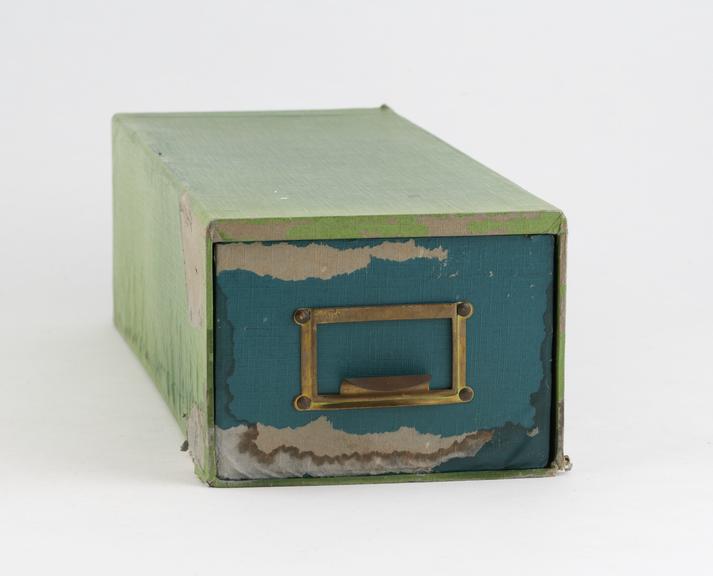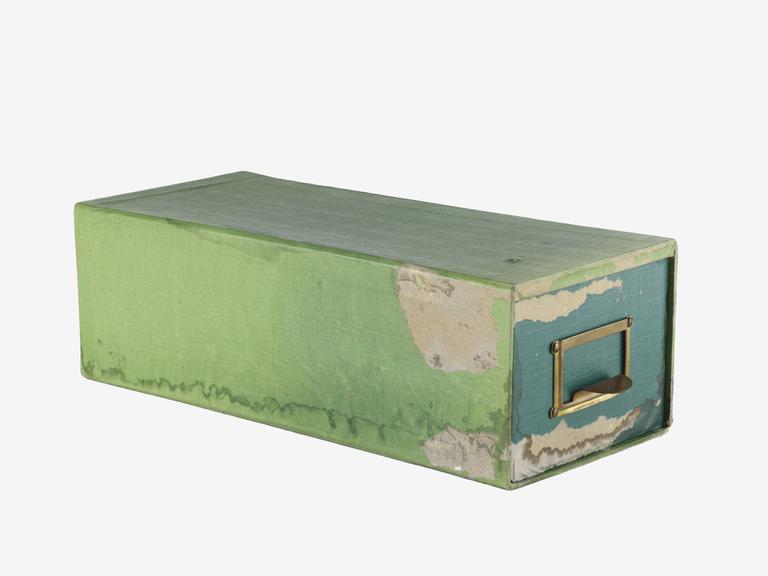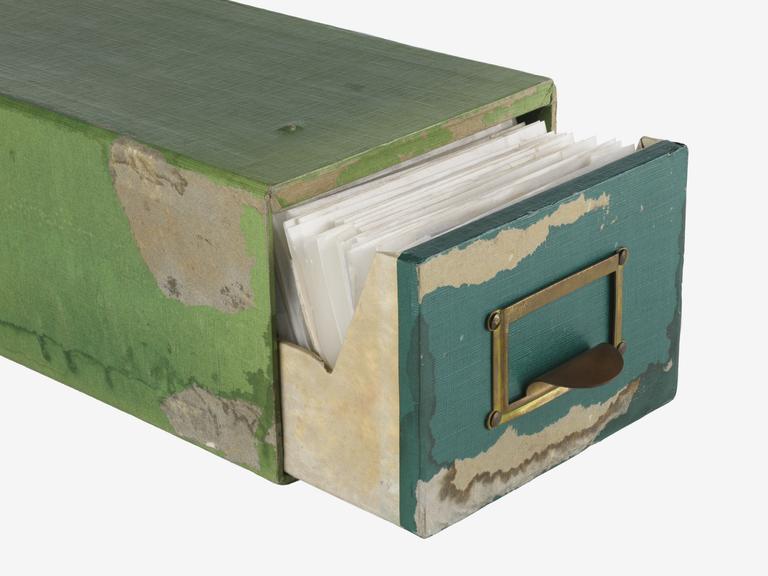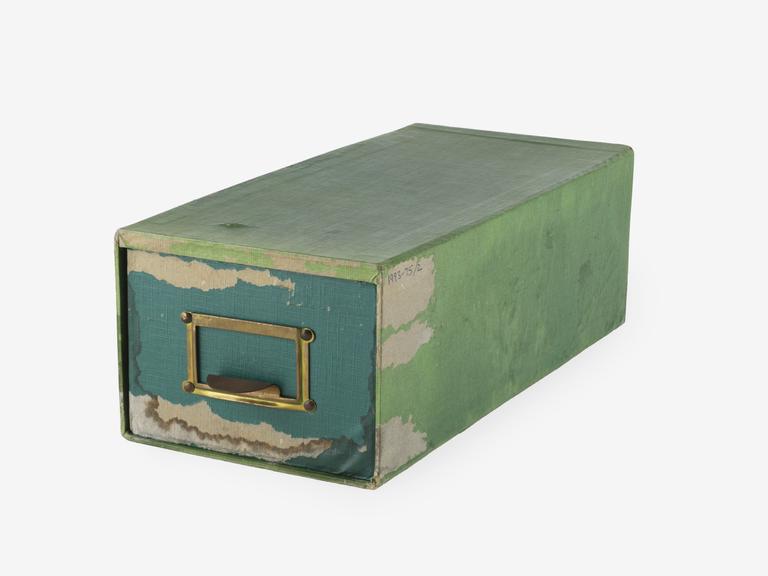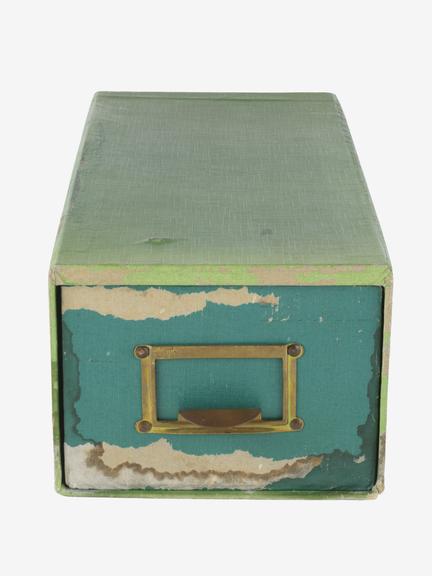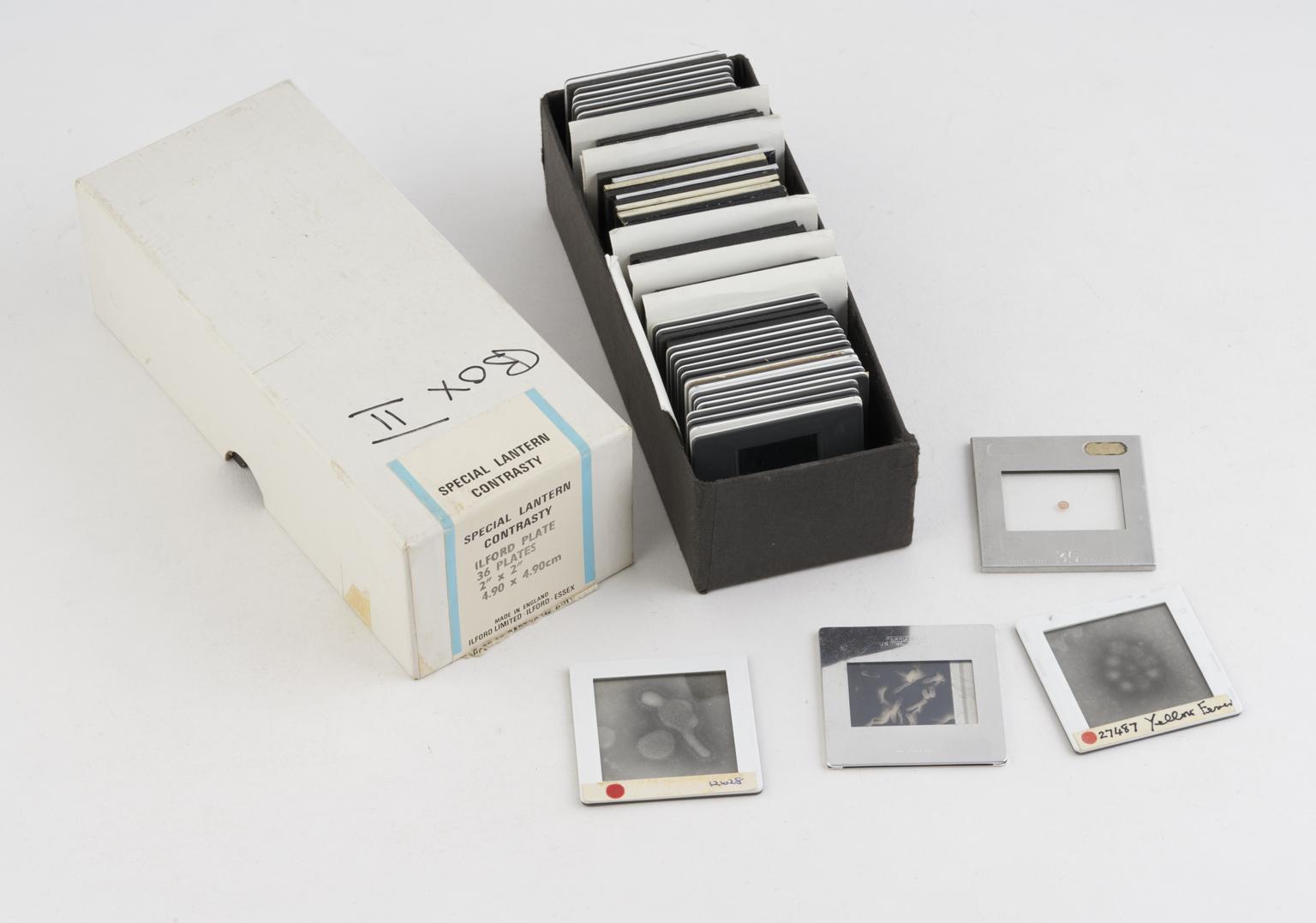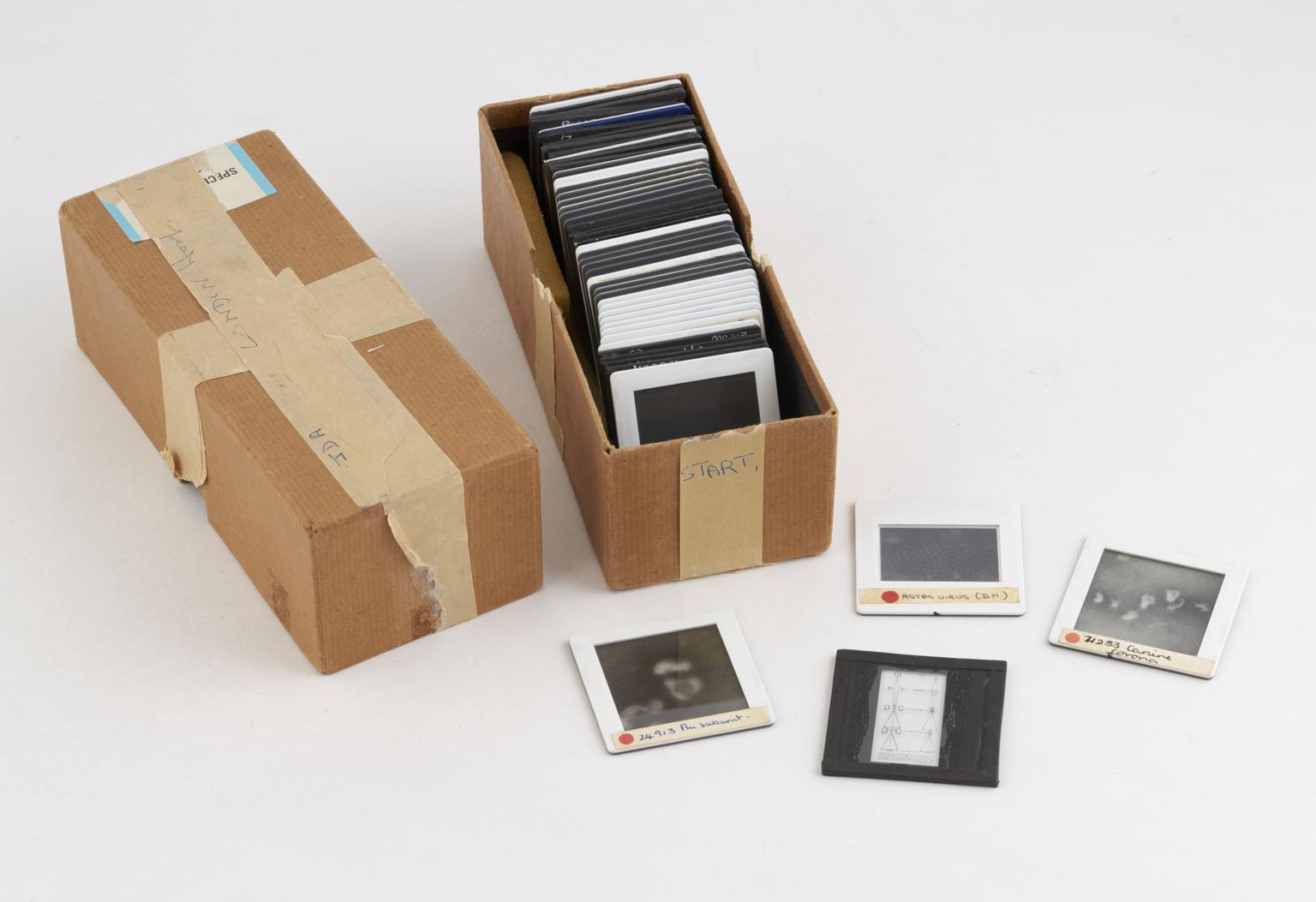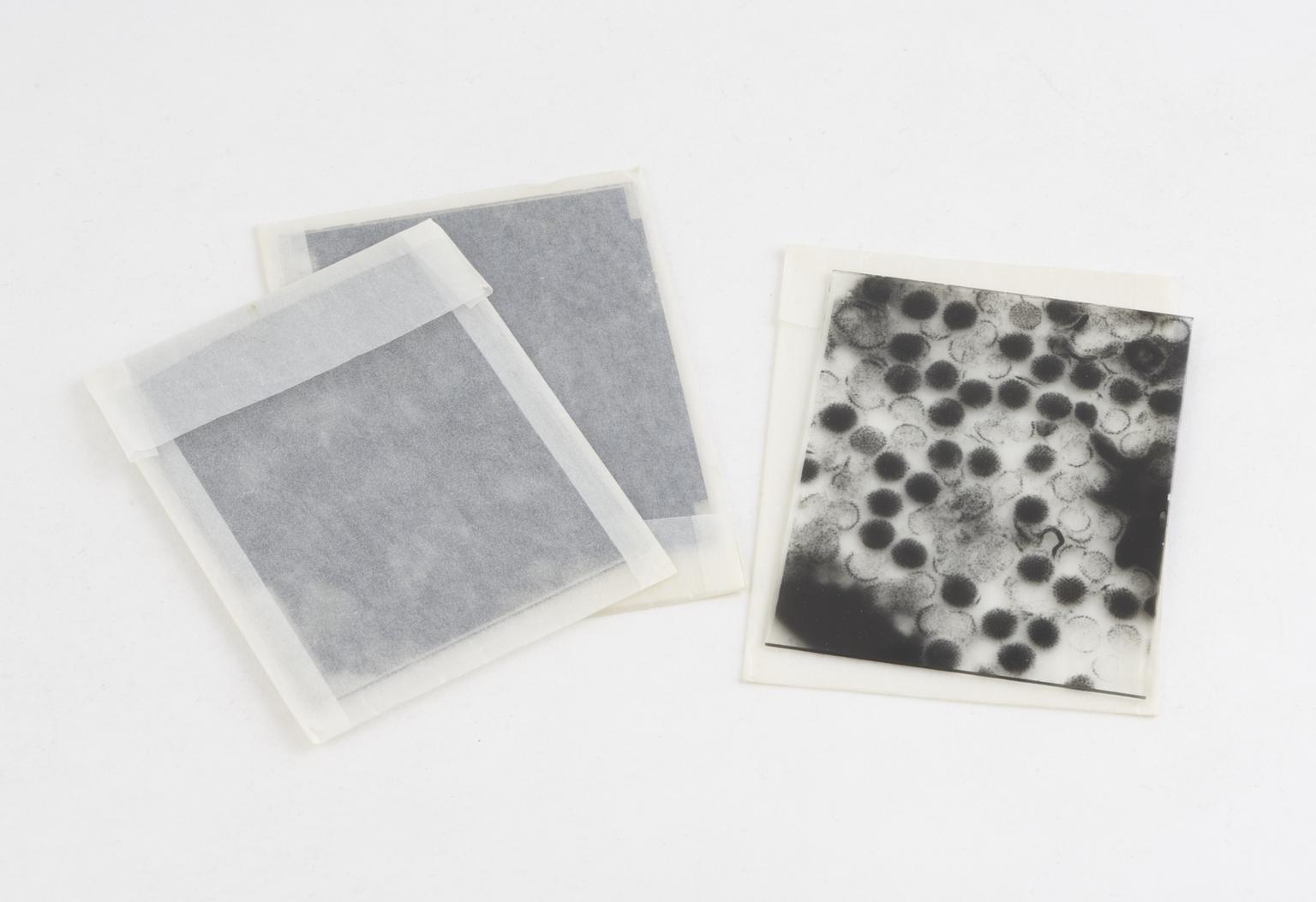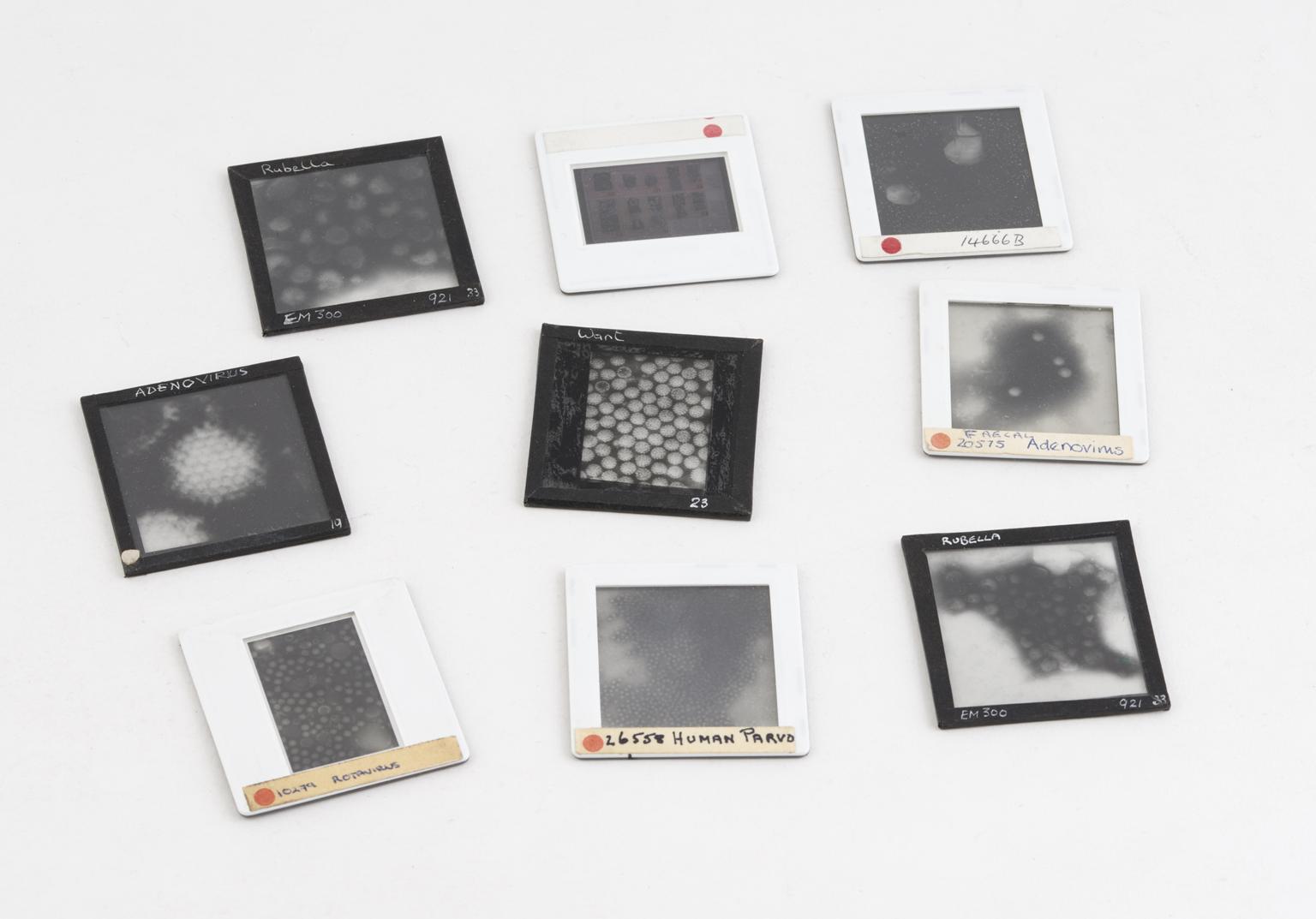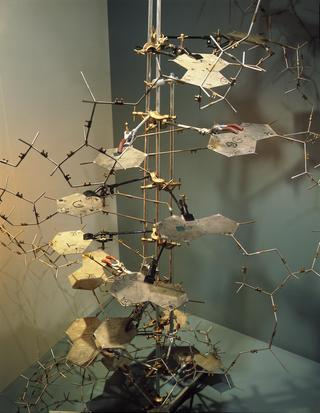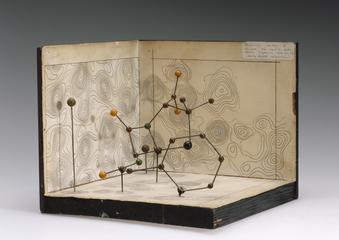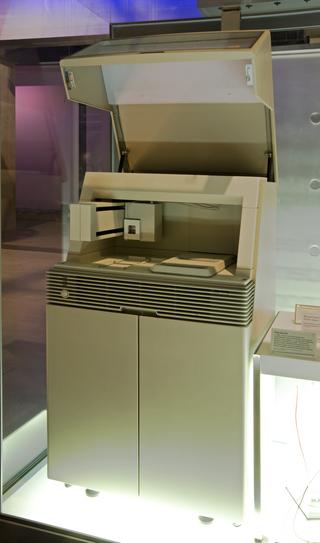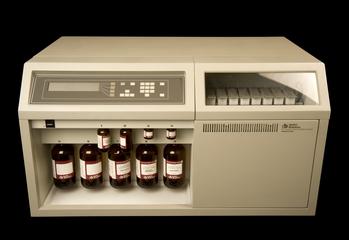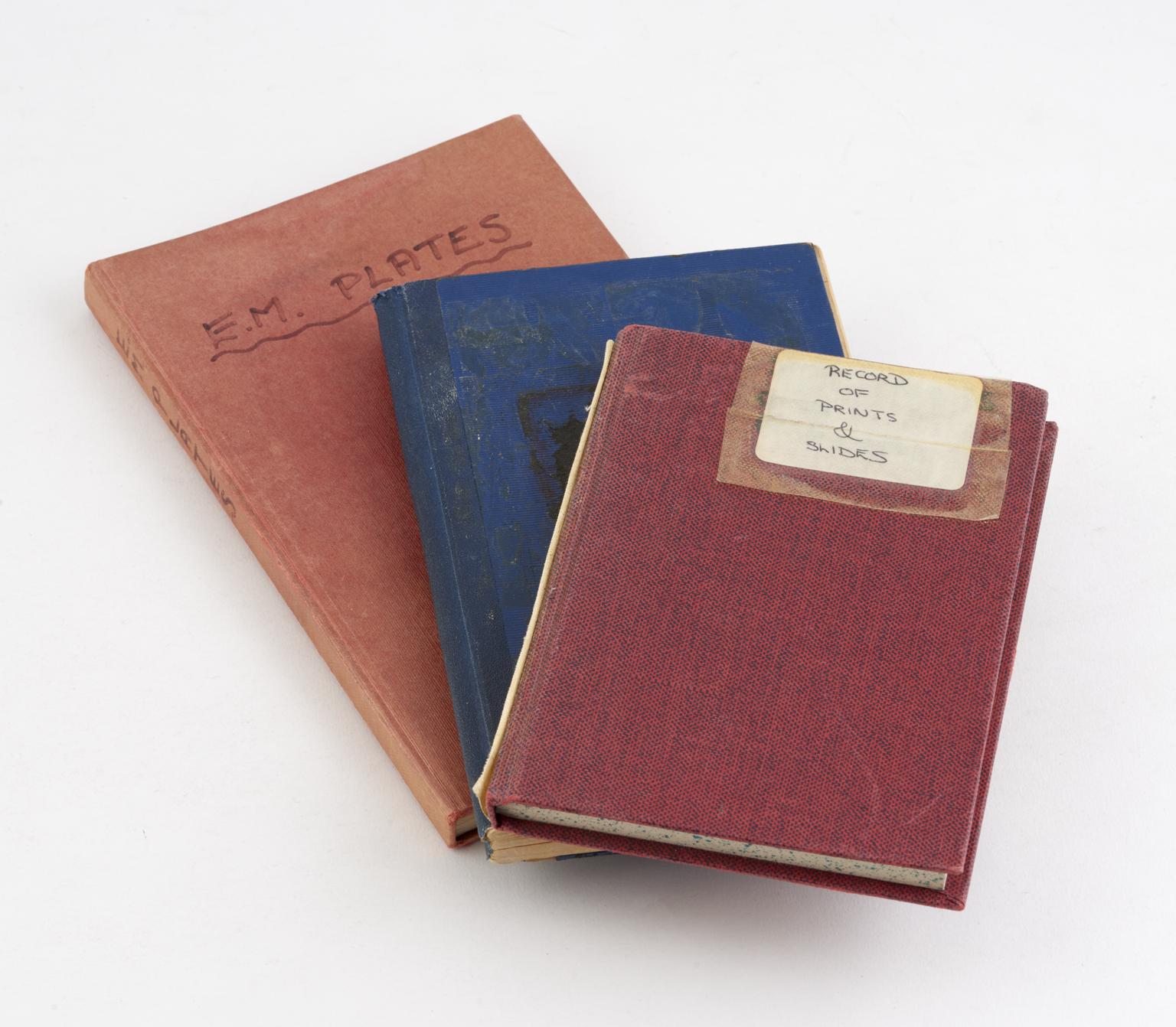
Indexes for Prints and Slides of Virus Structures by Dr June Almeida
Three index books recording details of prints and slides of virus structures taken by Dr June Almeida on an electron microscope, 1960-1980.
More
June Almeida (née Hart) was an internationally renowned virologist who pioneered new electron microscopy methods for imaging and diagnosing viruses. June, with her colleagues, identified and named the first coronavirus in 1964, observing a round, grey dot covered in tiny spokes that formed a halo around the virus—like the sun’s corona. These slide index books relate to her work as a virologist.
Born June Hart in 1930, she lived with her family in a tenement building in Glasgow, Scotland. At 16, she left school without funding to go to university and started working as a lab technician at Glasgow Royal Infirmary, where she used microscopes to help analyse tissue samples. She later emigrated to Canada, where she worked at the Ontario Cancer Institute in Toronto, developing new techniques in electron microscopy to image viruses. Amongst her scientific achievements was the first visualisation of the rubella virus, imaging hepatitis viruses, and developing the technique of antibody clumping to visualise common cold viruses. June finished her career at the Wellcome Research Laboratory, where she worked on developing diagnostic assays and vaccine development. She retired in 1985, where her career took a different direction as she qualified as a yoga teacher.
- Materials:
- paper (fibre product) and textile
- Object Number:
- 1993-75/2/1
- type:
- books
- Image ©
- The Board of Trustees of the Science Museum
